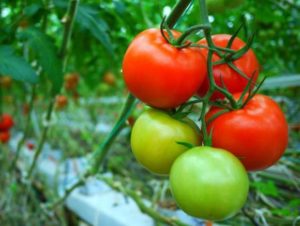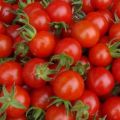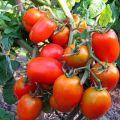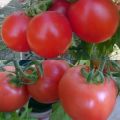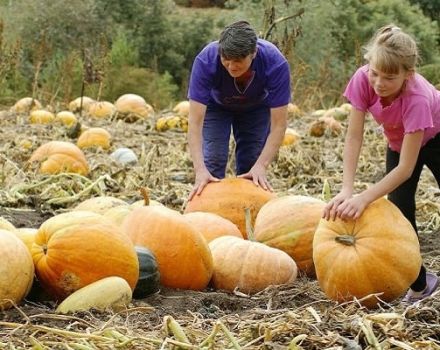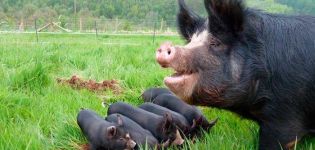Description of the tomato variety Slavyanin, features of cultivation and care
The frost-resistant, mid-season tomato Slavyanin was created by breeders of the West Siberian Experimental Station. A distinctive feature of the variety is the fruit with a pink color, pear-shaped. Pink-fruited tomatoes have an excellent taste and traditionally belong to salad varieties. But the Slavic tomato is a pleasant exception, for its ability to ripen in the open field, forming sweet, beautiful fruits for universal use.
Let's get acquainted in more detail with the characteristics and features of caring for the Slavic variety, as gardeners evaluate the tomato.
Main characteristics
Usually tomatoes for salad purposes are grown in greenhouses so that the fruits have time to ripen under the most favorable conditions. In this case, the dry matter and sugar contents reach their maximum values. But the Slavyanin variety is intended for cultivation in unprotected soil conditions. Temporary shelter is used only at the initial stage, when planting seedlings at an earlier date in the ground. Let's look at the description of the variety by the seed producer:
- The tomato is mid-season, with a growing season of 110–115 days. Therefore, it is grown using seedlings.
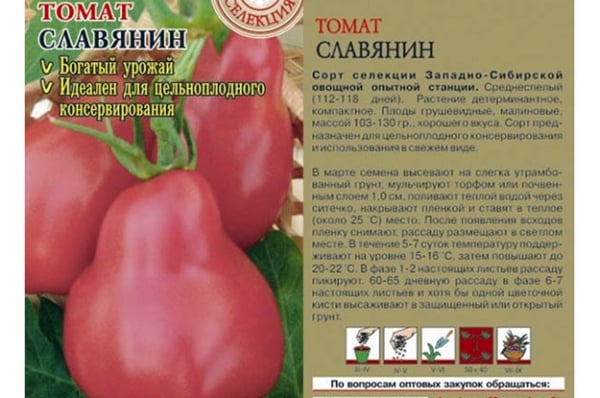
- The plant is determinate, well leafy, reaches a height of 1.3 meters, requires the removal of stepsons. 2 trunks are left on the bush, tying them to a support.
- Fruits of a delicate raspberry color, pear-shaped with ribbing at the base, weighing 100–135 g. Dense pulp with a high proportion of dry matter.
- Slavian's tomatoes are sweet, universal. The skin does not crack during heat treatment, which allows the use of tomatoes for pickling and pickling.

- Seed producers give a yield guarantee of 3-4.9 kg per bush. For street tomatoes with a short growing period, this is a very good indicator.
The set of characteristics speaks of an interesting variety with a rare combination of technical consumer qualities. Gardeners' reviews also characterize the plant as an unpretentious and very reliable variety. But it is noted that when grown in a greenhouse, the plant pampered and behaves like an indent, continuing intensive, unlimited growth.
Important! Dignity determinant tomatoes is the early return of the crop. Excess shoots are removed so as not to get a plant overloaded with fruits.
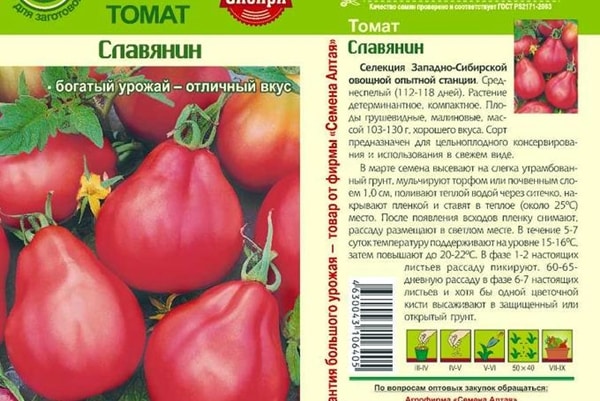
Care features
For tomatoes grown in the open air, planting dates are chosen taking into account the agro-climatic conditions of a particular area. In central Russia and the West Siberian region, the dates can differ significantly, and depend on the transition of average daily temperatures through the plus mark. Agrotechnics:
- Seeds are sown for seedlings from late March to the end of the first decade of April.Tomatoes are transplanted to the place of constant growth in the third decade of May with the obligatory film cover, or in the first decade of June. It is advisable to carry out several hardening procedures for seedlings.

- By the time of planting, the plants should have 6–8 leaves and one flower cluster. Seedlings should be 60–85 days old. Seedlings are planted according to the scheme 50x60 cm, with a stalk garter to a reliable base.
- Another positive characteristic is that the variety is not too demanding on nutrition. During the growing season, 2-3 phosphorus-potassium fertilizing is carried out, trying not to overfeed the plant with nitrogen fertilizers. The rest of the care is traditional.

Fruits are collected in August. For another two months, the harvested fruits do not lose their presentation.
This makes it possible not only to calmly deal with harvesting, but also to consume fresh tomatoes for a long time.
